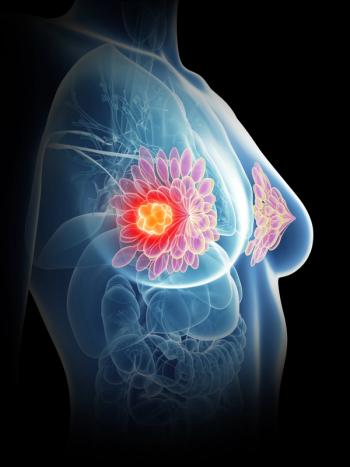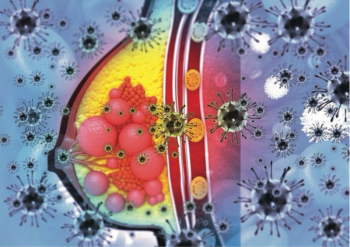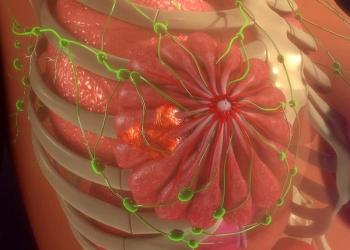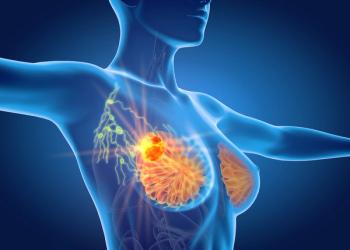
Oncology NEWS International
- Oncology NEWS International Vol 9 No 3
- Volume 9
- Issue 3
Elderly Patients Tolerate Breast Cancer Therapy
There is no clear consensus among oncologists about the degree to which elderly breast cancer patients should be subjected to aggressive diagnostic and therapeutic strategies. Physicians consequently have tended to treat elderly women
CHICAGOThere is no clear consensus among oncologists about the degree to which elderly breast cancer patients should be subjected to aggressive diagnostic and therapeutic strategies. Physicians consequently have tended to treat elderly women with invasive breast cancer conservatively because of the view that comorbid conditions and advanced age make them more likely to die of causes other than breast cancer.
Data from a study presented at the 85th Annual Meeting of the Radiological Society of North America (RSNA) suggest, however, that elderly women with invasive breast cancer should be offered standard therapy because they die more often of breast cancer than other diseases, said Brian Lawenda, MD, of the Naval Medical Center, San Diego.
The study retrospectively analyzed patient records and tumor registry data from the Naval Medical Center and Tripler Army Medical Center, Honolulu, to identify women aged 75 and older who had been diagnosed with breast cancer between 1988 and 1998.
A total of 71 breast cancer lesions had been detected during that period of time in 68 women who ranged in age from 75 to 90 years. About half (49%) of the lesions were initially diagnosed on mammography, and the remaining 51% were found during clinical breast examination. Half of the women underwent mastectomy, 44% had breast-conserving surgery, and 9% had fine-needle aspiration as their only therapeutic intervention.
Among the women who had breast-conserving surgery, only 64% received local radiotherapy. In contrast, overall, more than 80% of US women who have lumpectomy receive radiotherapy.
Although 80% of patients had tumors that were estrogen-receptor positive, only a little over half (51%) of these women received hormonal therapy. Only 29% of women with lymph node involvement received chemotherapy or radiotherapy. Chemotherapy was given to 10% of women with positive lymph nodes; the majority of women with nodal involvement (80%) received hormonal treatment.
The study defined nonstandard treatment as breast-conserving surgery without radiotherapy or treatment with fine-needle aspiration alone, and standard therapy as mastectomy alone or breast-conserving surgery in combination with radiotherapy.
Overall Survival
With a median follow-up of 37 months, the difference in overall survival between women treated with standard therapy (69%) vs those given nonstandard therapy (44%) is not significant although it is clinically impressive, Dr. Lawenda said. Breast cancer was the principal cause of death for most patients in the study. Although 82% of the patients had a comorbid condition, 58% (14 of 24 patients) died of their underlying breast cancer.
Citing a recent study from the Institute of Medicine, Peter A. Johnstone, MD, head of the radiation oncology division at the Naval Medical Center, said that in many cases, elderly people are less likely to get effective cancer therapy than younger people despite evidence they can tolerate it and benefit from it. The underuse of aggressive therapy among older people is often assumed to be related to the presence of coexisting conditions, but even among those without complicating conditions, there are treatment differences according to age.
Although physicians may feel that older women are too frail to have aggressive treatment for breast cancer, thats not always the case, Dr. Johnstone said. These data show that we need to be more aggressive with therapy in older patients. People are living longer and better, and age and coexisting medical problems seem less important than we previously considered.
Articles in this issue
almost 26 years ago
IL-13 Used to Deliver Bacterial Toxin to Brain Tumors in Micealmost 26 years ago
Rituximab/CHOP Combo Effective in Low-Grade NHLalmost 26 years ago
3D CT-Guided Seminal Vesicle Biopsy for Stagingalmost 26 years ago
Coaxial Breast Biopsy Device Provides Diagnostic Specimensalmost 26 years ago
3D Digital Camera Accurately Calculates Breast Shape, Volumealmost 26 years ago
Thermoacoustic CT Under Development for Breast Imagingalmost 26 years ago
Early Local Recurrence After Lumpectomy Predicts Metastasisalmost 26 years ago
Panel Recommends Listing 9 Substances in Carcinogen Reportalmost 26 years ago
State of the Union on Youth Smoking ‘Clearly Not Good’Newsletter
Stay up to date on recent advances in the multidisciplinary approach to cancer.

















































































